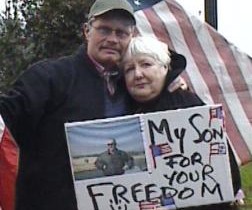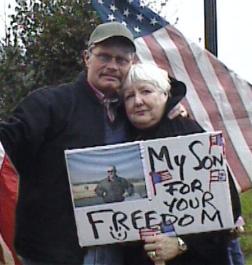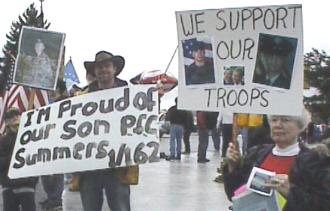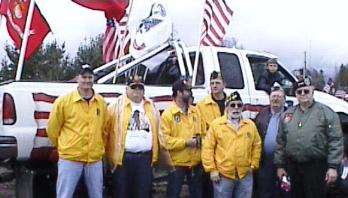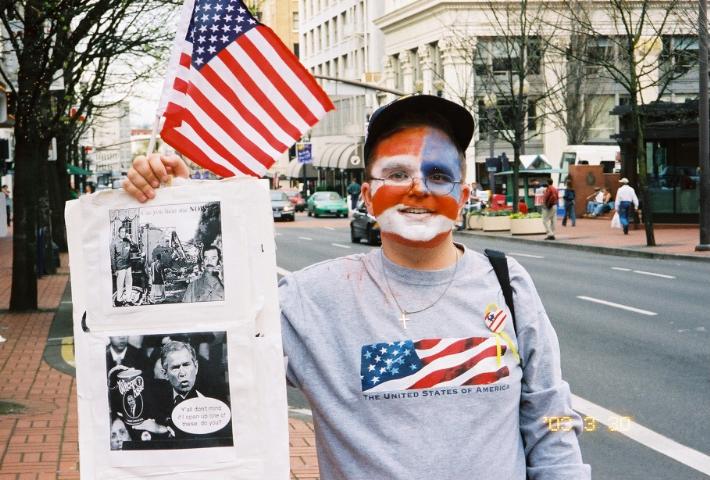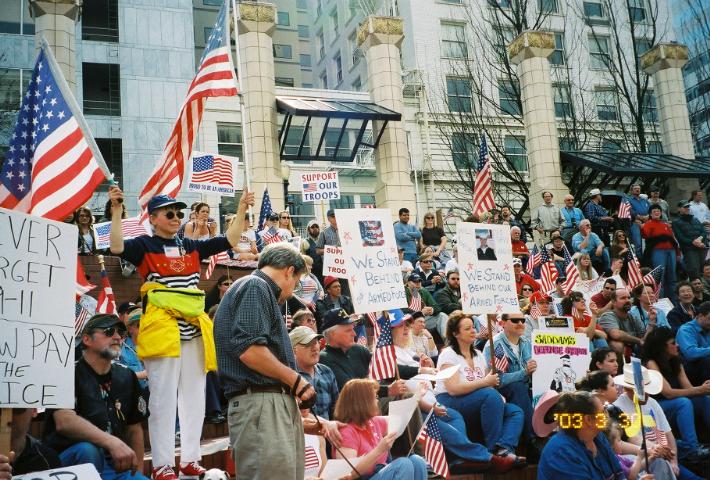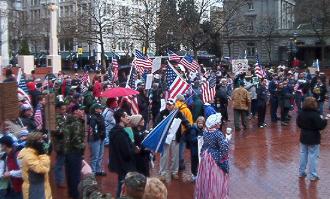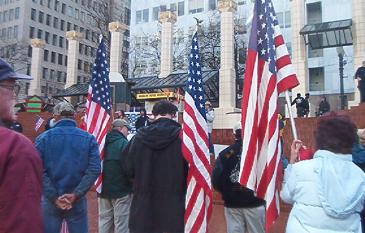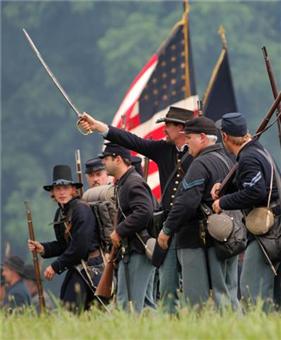Monthly Archives: August 2013
Portland, Pioneer Courthouse Square, March 22nd, 2003
Civil War Reenactment
The year was 1863. Our nation was at war, for the first time, with itself. Brothers were fighting brothers.
Can you picture it? Now, see it for yourself.
The Northwest Civil War Council is putting on its second public reenactment event of the season at Willamette Mission State Park in Keiser, outside of Salem. This group has been around for 25 years, simulating battles complete with cannons and gunfire, all in an effort to teach kids and adults what life was really like during the Civil War.
“The Civil War made America what it is today. It was Americans killing Americans and it hasn’t happened before or since,” Scott Ingalls, the Chairman of the Northwest Civil War Council, told me when I visited their event at Cheadle Lake Park in Lebanon this past May. At that event, the council hosted 1,500 school kids from around Oregon.
The council is recognized by the National Trust for Historic Preservation as authentic living historians. Kids, especially, find this period of American life interesting when it’s put on display in front of them. “We work very hard at accuracy, in the camps, in what we’re wearing, in what we’re saying,” Scott says. “Kids want to know how we’re surviving out here. Are we spending the night? Are we really going to eat that? We’re in public persona, 24-hours-a-day from when the event starts. There’s no iPods, iPads, microwaves, nothing. We’re period correct.”
As much as I’ve always been fascinated with the Civil War, and as much as I paid attention in school, I learned a few things myself from these reenactors. One lesson came at a tent with a large wooden coffin sitting out front. If that’s not a conversation piece, I don’t know what is. When I inquired about it to the man inside the tent, he promptly handed me a business card that read: “Oscar B. Hult, Embalming Surgeon”. He quickly explained, in character of course, that he made a living by following the regiment, offering his services to soldiers in case they died on or off the battlefield. For $13, roughly one month’s pay, a soldier could arrange to have his body embalmed so he could be shipped back home to his family. “The railroad refuses to ship anyone who’s not embalmed because of the stench,” Oscar explained. I guess it makes sense when you think about it.
The more I roamed through the camps and met the players—people from all over Oregon and even Washington—I quickly began to appreciate why they do this. They travel the northwest, lugging their props, equipment, artillery and animals with them because they love it—all of it; the history, the interaction with the public, and the displays that really put history on a tangible level for those who come to see it.
Take Linda Kalayjian, for example. I met her as she was tending her campsite, starting a fire to make coffee. Also in character, she explained that it was a lot of hard work. “You’re focusing on your daily activities. So, that’s water, firewood, having hot coffee for the gentlemen. Always staying busy.” Linda has been a reenactor for 20 years and it was at a reenactment at Dorris Ranch in Springfield that she met her husband. They’ve been married for six years now.
For Linda and all the other men, women and families that participate, these events are a way to love history and pay homage to it at the same time. To remember a war that divided a nation, and then eventually brought it back together, stronger and unified.
The Northwest Civil War Council extends an open invitation for you to come see it for yourself. More than 1,000 reenactors are expected to pitch their tents for 4 days at Willamette Mission State Park starting this Saturday, June 30. There will be battles twice a day at 11:00am and 3:00pm. For more information, check out www.nwcwc.org.
Kelli Warner
